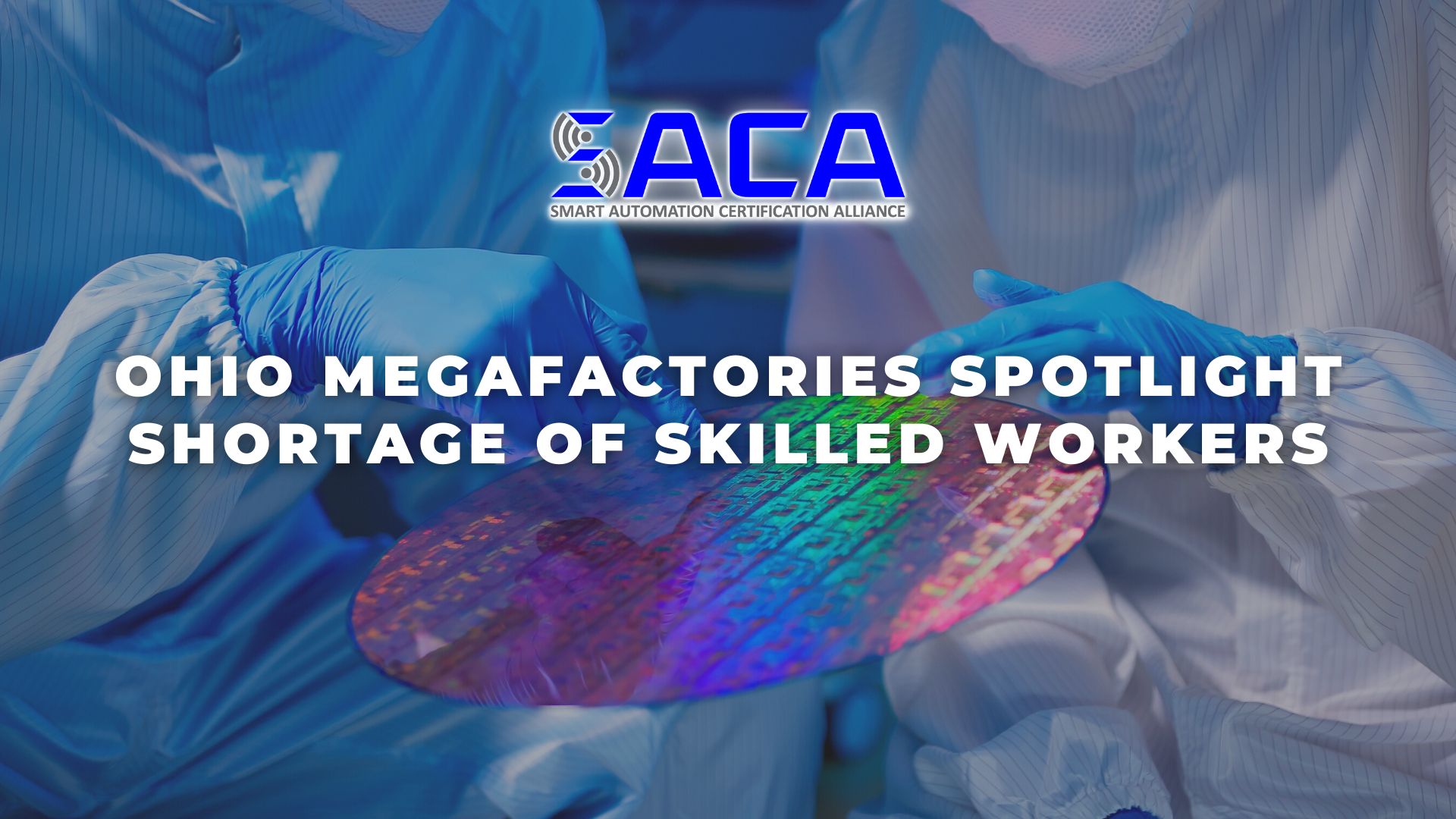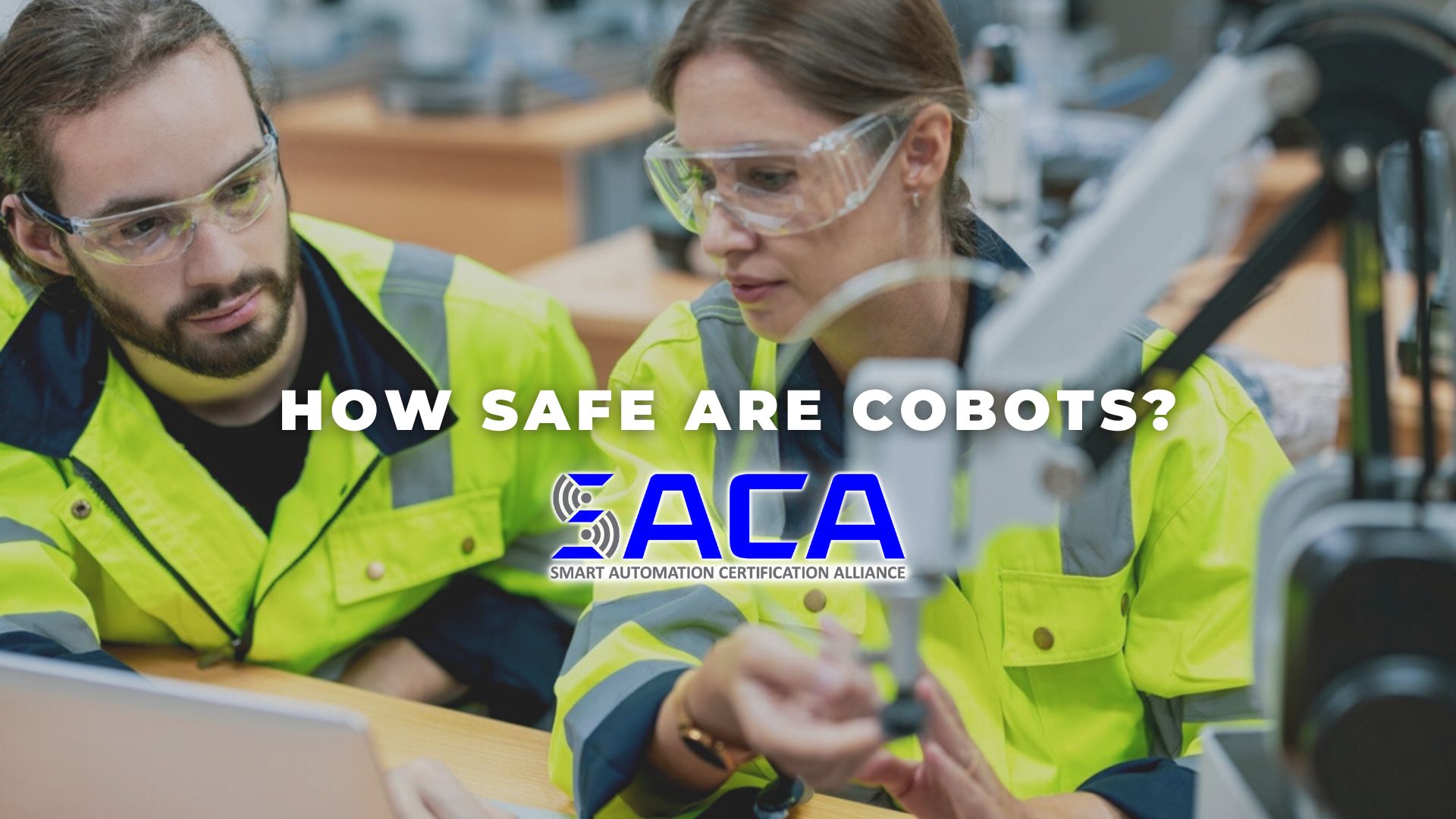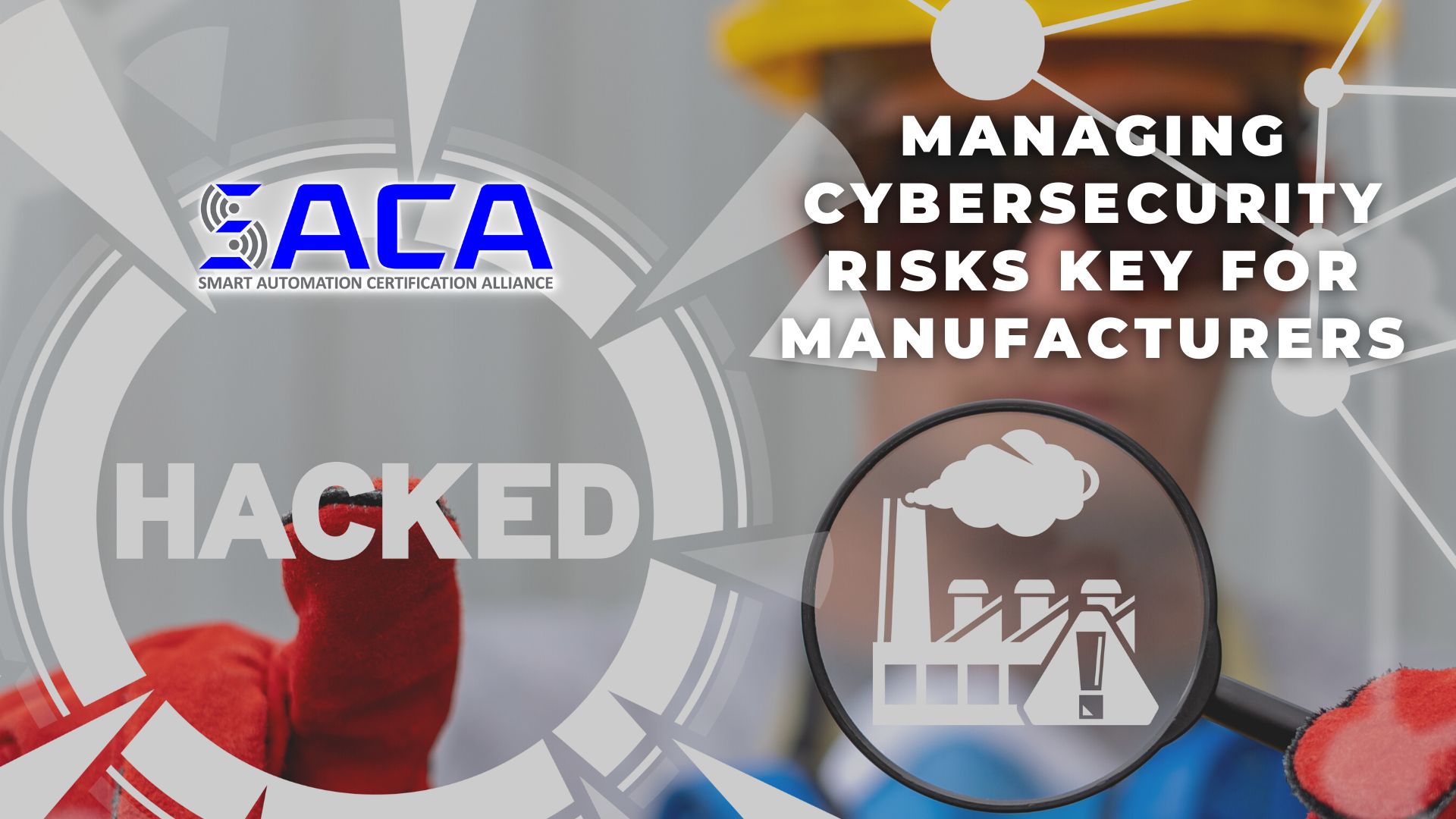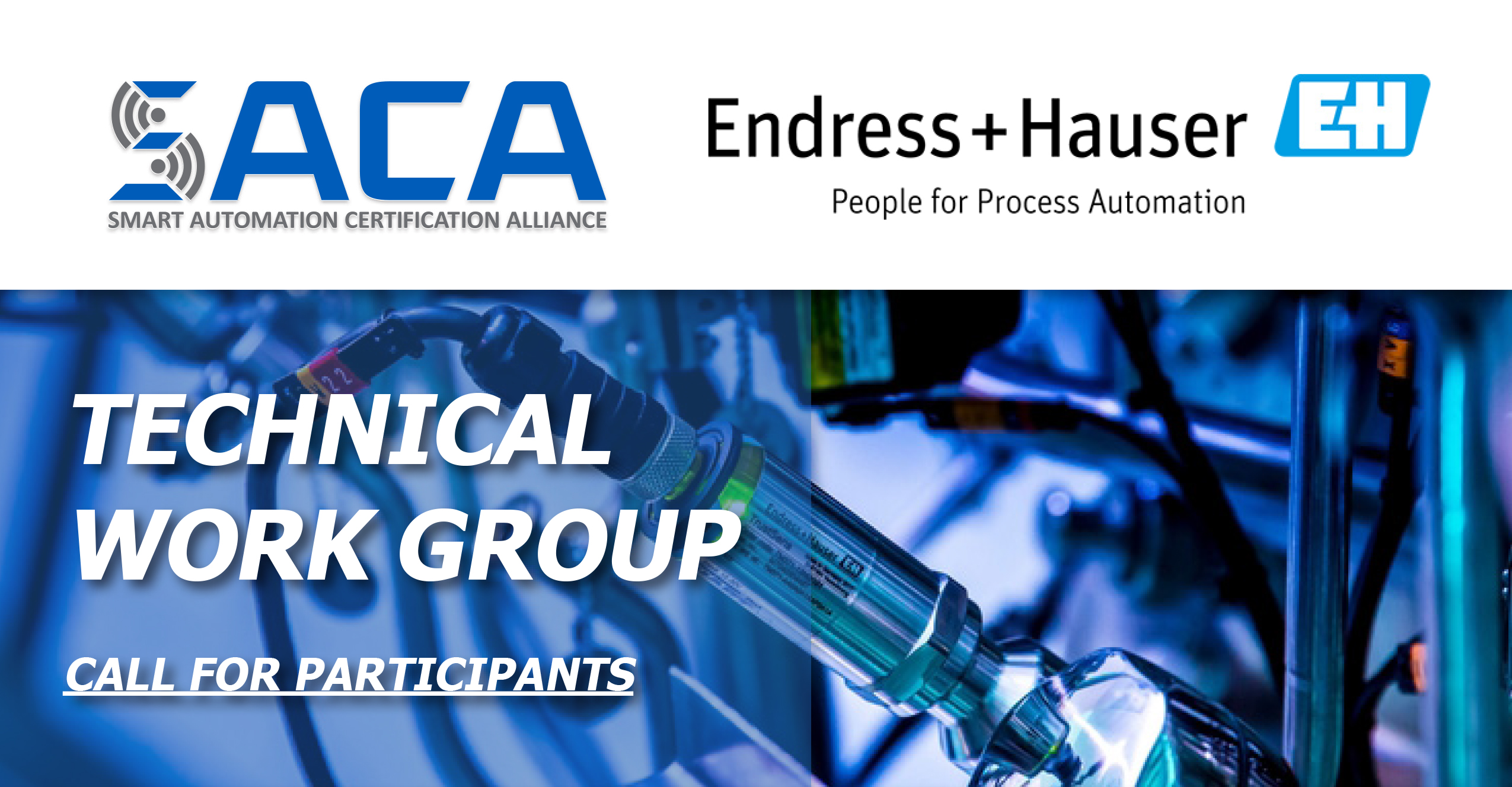Manufacturers Taking Cybersecurity More Seriously in Light of Growing Threats
Most modern manufacturing facilities bear little resemblance to the hot, dirty facilities many people still imagine when they think of manufacturing. Instead, today’s manufacturing workplaces boast clean, comfortable environs suitable for the advanced automation technologies that have enabled manufacturers to be more productive and efficient than ever before.
The advancements that result from new automation technologies aren’t without their costs, however. According to a recent IndustryWeek article by Stephen Gold, “These are harrowing times for manufacturing professionals who, in an era of Industry 4.0, are trying to integrate their information technology and operational technology while defending against the dramatically rising threat of cyber criminals.”
Eschewing these new technologies isn’t an option, according to Gold: “It’s not like they have a choice on whether to integrate their IT with OT such as machine automation, industrial control systems (ICS), robotics, programmable logistics controllers (PLCs) and building management systems (BMS). Successful IT/OT collaboration is critical to modern manufacturers’ digital strategies.”
Unfortunately, these same technologies have become “the portal where cyber criminals gain entry to the lifeblood of the company: factory operations.” Is the threat really that serious, though? Indeed, it is. According to IBM’s X-Force Threat Intelligence, “in 2021, manufacturing surpassed finance and insurance as the top targeted sector of cyber bad actors. Today, 1 out of every 4 cyber-attacks on business are against manufacturers.”
Why target manufacturers? One potential reason is the fact that many manufacturers have been quick to adopt new technologies but slow to ensure that those technologies are secure. Another key reason is that, “[d]espite FBI guidance, manufacturers pay the requested ransom more often than other industries – and at typically higher rates.”
Fortunately, manufacturers appear to be “meeting the challenge head on.” A recent study “found that American manufacturers’ level of cyber maturity is catching up to their accelerated pace of digital transformation. This is vital because, while financial extortion related to data theft is a serious risk, infiltration of operating systems with the intent to sabotage or even shut them down poses an existential threat to manufacturers.”
The first step to address cybersecurity risks is raising awareness of and acknowledging the issue. Much progress has been made in this area. The study found that, “[w]hen asked to rank cybersecurity as a business risk, 80% put it in the top five, 10 percentage points higher than three years ago. And no wonder: that same percentage experienced at least one breach resulting in unauthorized access to data in the previous 12 months.”
While not every manufacturer gets hit with a ransom demand, the effects of cyberattacks can be widespread and devastating. Manufacturers have reported issues ranging from operational outages that affected revenue to significant loss of business-critical data and intellectual property.
The key to effective cybersecurity remains efficiently managing IT and OT threats. However, “manufacturers face one primary obstacle to ultimate success: finding in-house expertise to oversee the cyber threat, a high hurdle considering the broader skilled talent shortage being experienced.”
The manufacturing skills gap is real, and it’s even more critical in the area of cybersecurity. According to a recent survey, “roughly 8 out of 10 manufacturers pointed to scarcity of talent and expertise as a key barrier to effective breach response within the last year.” That’s why it’s critical for manufacturers to hire highly skilled workers that can manage cybersecurity risks, in addition to operating, maintaining, troubleshooting, and repairing the advanced automation systems that are being implemented.
How can manufacturers find the workers they need? And how can they be sure that workers have the hands-on skills they need to succeed in the modern workplace? Today, more and more manufacturers are looking for workers with industry-standard certifications that prove they have the skills employers need. For example, if workers possess a certification from the Smart Automation Certification Alliance (SACA), employers can feel confident they’ve already proven they have the knowledge and hands-on skills needed for working with advanced smart automation technologies. SACA has been hard at work collaborating with industry leaders to develop a wide variety of industry-standard certifications that will help employers find workers who possess the advanced connected-systems skills they need to take their businesses to the next level. Be sure to check out SACA and all it has to offer!
- Published in News
Connected Workers Essential to Smart Factory Success
“The robots will steal all our jobs!” That’s the familiar refrain you’ve probably heard time and again when industries implement advanced automation technologies, such as robots, automated guided vehicles, machine learning, and artificial intelligence.
But is there any truth to it? While advanced automation technologies may indeed replace human workers in areas where tasks are dangerous and/or repetitive, industry experts focus instead on the new roles created when new technologies enter the workplace.
Automation experts have always known that advanced automation technologies wouldn’t completely replace human workers. However, it’s becoming clear in factories everywhere that the secret ingredient to ensuring that these advanced technologies operate efficiently and productively is…ironically…human beings.
Specifically, the human beings modern automated workplaces need are so-called “connected workers.” According to a recent Automation World article by Eric Whitley, “[c]onnected workers are the human component within a sophisticated network of automated machinery, ensuring that systems run smoothly and efficiently. They provide the insight and oversight that machines alone cannot, adjusting operations in real-time based on data-driven feedback.”
Highly skilled, connected workers are “equipped with digital tools to interact with and control automated systems. Their key responsibilities include monitoring system performance, managing workflow adjustments and providing on-the-spot problem-solving.”
Companies that have already implemented a connected worker model report “significant improvements in operational efficiency and product quality…[via] fewer errors, reduced downtime and a more engaged workforce…transform[ing] traditional manufacturing environments into dynamic, responsive systems.” Connected worker success stories can be found at places like Siemens, General Motors, and Boeing.
So, what kinds of workers make the best connected workers? According to Whitley, “[c]onnected workers must possess a blend of traditional manufacturing skills and digital literacy. They need to understand not only the mechanics of the machinery but also how to analyze and interpret data. Equally important is their ability to interact with advanced technological interfaces that are central to modern automated systems.”
Connected workers “must be willing to update their skills regularly to keep pace with technological advances.” Likewise, companies seeking to automate must be willing to invest in ongoing training. “Companies that foster a culture of lifelong learning are better positioned to capitalize on the benefits of factory automation.”
Whitley notes that “[t]o prepare workers for these evolving roles, training methodologies have become more innovative, often employing virtual reality and simulation-based learning. These tools offer hands-on experience in a controlled environment, enabling workers to master complex systems without the risks associated with live operations.”
What steps does your organization need to take to effectively implement a connected worker model at your facility? In addition to upskilling current workers, employers need to ensure that new workers have the hands-on skills they need to succeed.
Today, more and more employers are looking for workers with industry-standard certifications that prove they have the skills needed. For example, if workers possess a certification from the Smart Automation Certification Alliance (SACA), employers can feel confident they’ve already proven they have the knowledge and hands-on skills needed for working with advanced smart automation technologies. SACA has been hard at work collaborating with industry leaders to develop a wide variety of industry-standard certifications that will help employers find workers who possess the advanced connected-systems skills they need to take their businesses to the next level. Be sure to check out SACA and all it has to offer!
- Published in News
Ohio Megafactories Spotlight Shortage of Skilled Workers
Skilled Labor Shortage in OH as Semiconductor and EV Factories Announced
“If you build it, he will come.” That’s the famous line a farmer hears coming from his Iowa corn field in the movie classic Field of Dreams. Swap Ohio for Iowa and you might hear modern manufacturers saying the same thing, hoping with all their might that “he” will be skilled workers who come to Ohio if they build “it”: modern semiconductor and electric vehicle (EV) manufacturing facilities.
According to a recent Wall Street Journal article by John Keilman, Central Ohio is “where Intel is building two semiconductor plants at a combined cost of more than $20 billion, and Honda and LG Energy Solution are constructing a $3.5 billion electric-vehicle battery plant.” While these announcements have been met with great fanfare, they’ve also caused a good deal of anxiety in Ohio.
Why? There’s great concern about finding enough highly skilled workers to staff these new facilities. According to Keilman, these new plants “aim to hire more than 5,000 workers between them, and local suppliers that will serve the factories likely will need thousands more.”
However, manufacturers already struggle to fill jobs around Columbus, “which has one of Ohio’s lowest unemployment rates and a flourishing logistics industry that competes for the same employees.” In fact, “[t]he region’s plants have thousands of open positions, a shortage that is causing some managers to join their workers on the production line.”
The shortage of skilled manufacturing workers is nothing new. This issue — commonly known as the “skills gap” — has been frustrating manufacturers all across the country for years. Experts believe, though, that “[t]he coming wave of megafactories, aided by billions of dollars in public incentives, could push the shortage into a crisis.”
As Keilman notes, “[t]he U.S. is experiencing a factory-building boom as companies, burned by overstretched supply chains during the pandemic, reshore some of their operations. The Biden administration also has given priority to the nation’s semiconductor and EV industries, calling them matters of national security and setting aside billions of dollars in subsidies to aid their growth.”
But what is being done to increase the supply of skilled workers? According to Keilman, “[t]he Semiconductor Industry Association warns that the building boom could come with a labor shortage. More than half of the roughly 115,000 new positions expected to be created by the end of the decade could go unfilled, the group projects.”
That won’t happen if Intel has its way. Based upon its experiences with facilities in Oregon, New Mexico, and Arizona, “Intel has helped to design a training curriculum that will be offered at Ohio’s community colleges. The program…familiarizes students with semiconductor manufacturing so they can become technicians, an entry-level job that involves maintaining and troubleshooting equipment at the highly automated plants.”
Intel’s plans highlight the need for specialized training for workers in these megafactories that rely upon a wide variety of advanced automation technologies. That’s why “Honda…is talking to community college presidents, public school administrators and workforce development officials to develop pathways to its EV joint venture.”
So what should manufacturers in Ohio and around the country do to find the highly skilled workers they desperately need? How can employers be sure that workers have the hands-on skills they need to succeed in the modern workplace? Today, more and more employers are looking for workers with industry-standard certifications that prove they have the skills needed.
For example, if workers possess a certification from the Smart Automation Certification Alliance (SACA), employers can feel confident they’ve already proven they have the knowledge and hands-on skills needed for working with advanced smart automation technologies. SACA has been hard at work collaborating with industry leaders to develop a wide variety of industry-standard certifications that will help employers find workers who possess the advanced connected-systems skills they need to take their businesses to the next level. Be sure to check out SACA and all it has to offer!
- Published in News
Artificial Intelligence Saves Energy Costs in Iron Foundry
Will Artificial Intelligence Impact Every Industry?
Artificial Intelligence (AI) seems to be everywhere you look these days. Some laud AI as an exponential step forward in what technology can do to transform our jobs and lives. Others fear AI could be dangerous if used nefariously. Of course, authors like Carlos E. Perez in a recent Medium article jokingly play devil’s advocate: “Do you know what’s more dangerous than artificial intelligence? Natural stupidity.”
In all seriousness, it’s clear that AI has arrived and is here to stay. We’ve only seen the tip of the iceberg when it comes to its applications. Manufacturers across the country and around the world are already implementing AI solutions in a variety of ways. For example, in a recent TechTarget article by Lindsay Moore, the author gives several examples of ways manufacturers are using AI today, including:
- collaborative robots (cobots) working alongside humans;
- robotic process automation (RPA) software handling tedious and repetitive tasks;
- digital twins providing insight into the performance of machinery;
- predictive maintenance improving safety and lowering costs;
- lights-out factories utilizing a robotic workforce with minimal human interaction;
- machine learning algorithms predicting demand;
- inventory management systems smoothing out supply chain issues; and
- visual inspection systems detecting faults in real time.
Some manufacturers may look at a list like this and fail to see how AI could help their particular industry. After all, aren’t there some industries that tend to be more on the low-tech side of things? Take your average iron foundry, for example. Melting down metal, pouring it into a mold, and letting it cool to solidify to make a wide variety of cast metal objects doesn’t seem like it would hold great potential for implementing AI, right? Wrong!
A recent Foundry Management & Technology article details how Danish iron foundry Vald. Birn A/S implemented AI technologies ”to optimize the process of filling sand molds,” resulting in significant energy savings. The foundry produces cast metal “parts for commercial vehicle manufacturng, construction and material handling machinery, hydraulic systems, transmission systems, heavy machinery, and defense systems.”
According to the article, the foundry adopted new AI technology “to monitor and analyze molten-metal pouring.” Here’s a brief breakdown of how it works:
“two laser beams are positioned to precisely locate a molten metal stream as it enters the mold, to control pouring in a way that is repeatable and reliable. As the stream enters the mold, sensors collect pouring performance data and software evaluates the information to continuously optimize parameters, to avoid slag build-up, variations in temperature and launder level, wear conditions for the stopper and nozzle, and similar problems that reduce dosing effectiveness.”
Birn CTO Lars Jørgensen noted that “[t]he technology helps us save a significant amount of energy because precise dosing into the molds is essential for determining the exact amount of energy needed to fill the molds adequately and allow the molten metal to flow perfectly into the molds.”
Iron foundry workers need not be worried about being replaced by AI, however. Jørgensen explained that “[t]he technology is a great aid to our operators, but it certainly cannot replace them in the whole process. It essentially serves as a skilled assistant, helping to optimize the pouring processes while operators can take samples of molten iron and perform other specialized tasks.”
Even if AI does not replace workers, the workers of today and tomorrow will need to learn new skills to keep pace with the advanced technologies being implemented in the modern workplace. That’s why manufacturers are increasingly looking to hire highly skilled workers that can operate, maintain, troubleshoot, and repair advanced automation systems.
Unfortunately, due to the ongoing “skills gap” facing industries across the country, finding highly skilled workers remains a significant challenge. How can employers be sure that workers have the hands-on skills they need to succeed in the modern workplace? Today, more and more employers are looking for workers with industry-standard certifications that prove they have the skills needed.
For example, if workers possess a certification from the Smart Automation Certification Alliance (SACA), employers can feel confident they’ve already proven they have the knowledge and hands-on skills needed for working with advanced smart automation technologies. SACA has been hard at work collaborating with industry leaders to develop a wide variety of industry-standard certifications that will help employers find workers who possess the advanced connected-systems skills they need to take their businesses to the next level. Be sure to check out SACA and all it has to offer!
- Published in News
Lean Manufacturing Goes Digital
“Digital Lean” Adds Value by Focusing on Specific Process Improvements
If you work in the manufacturing industry, there’s a good chance you’re familiar with the concept of lean manufacturing. This production system that focuses on eliminating waste and maximizing productivity is based upon guiding principles that date back to the late 1950s and early 1960s.
According to a recent Industry Week article by Doug Berger and Conrad Leiva, “Lean has played a significant role for the past few decades in driving efficiency across manufacturing organizations by providing people with the data and methods for eliminating waste, improving factory flow and focusing on customer value. Lean techniques have promoted simple, intuitive visual and analytical approaches to decision making, problem-solving and continuous improvement.”
Thanks to modern advanced automation technologies, there’s been renewed interest in lean manufacturing and its possibilities. Berger and Leiva note that “[t]he ‘digital lean’ movement stays true to lean principles while taking advantage of the real-time and data-centric techniques from smart manufacturing and Industry 4.0.”
Digital lean doesn’t just promote technology for the sake of the latest and greatest, though. To be most effective, digital lean “works best when the operations improvement team pulls in technology to add value for specific process improvements.”
According to Berger and Leiva, “technologies like automated data collection, analytics platforms, digital dashboards, artificial intelligence and integrated workflow systems” can result in “even greater levels of efficiency, quality, velocity and adaptability in operations.”
The authors point out three key areas where “the added value that well-placed digital technology can bring to a lean effort”:
- Reducing Waste: Advanced automation technologies can improve waste reduction by:
- using predictive maintenance to reduce downtime;
- using real-time detection to reduce defects; and
- using enhanced value stream mapping (VSM) to reduce waste.
- Reducing Inventory: New Industry 4.0 technologies can improve inventory efficiency by:
- using automated material tracking to minimize inventory waste; and
- using automated material handling systems to improve flow throughout a facility.
- Improving People Utilization: Adding the right smart technologies can improve people utilization by:
- using real-time digital dashboards to improve work rhythm;
- using digital work instructions to reduce errors;
- creating paperless processes to eliminate unnecessary clerical steps; and
- using online training to improve talent use.
Getting started on a digital transformation to improve efficiency and productivity can seem like a monumental task. Berger and Leiva encourage manufacturers to “prioritize your areas of opportunity” and “for each step in your journey to build on the prior one and lay a good foundation for expanding future capabilities. Keep your options open.”
Of course, manufacturers will also need the right personnel to put digital lean plans into action. That’s why it’s critical for manufacturers to hire highly skilled workers that can operate, maintain, troubleshoot, and repair the advanced automation systems that are implemented as part of digital lean initiatives.
Unfortunately, due to the ongoing “skills gap” facing industries across the country, finding highly skilled workers remains a significant challenge. How can employers be sure that workers have the hands-on skills they need to succeed in the modern workplace? Today, more and more employers are looking for workers with industry-standard certifications that prove they have the skills needed.
For example, if workers possess a certification from the Smart Automation Certification Alliance (SACA), employers can feel confident they’ve already proven they have the knowledge and hands-on skills needed for working with advanced smart automation technologies.
SACA has been hard at work collaborating with industry leaders to develop a wide variety of industry-standard certifications that will help employers find workers who possess the advanced connected-systems skills they need to take their businesses to the next level. Be sure to check out SACA and all it has to offer!
- Published in News
Risk Assessment Still Essential to Ensure Cobot Safety
As advanced automation technologies have become commonplace in industrial workplaces over the last decade, many workers have feared that their jobs would soon be replaced by these technologies, such as robots. However, while some dangerous, overly-repetitive job tasks have been taken over by industrial robots, these technologies have actually created a variety of new jobs centered on their installation, operation, maintenance, troubleshooting, and repair.
Moreover, many workers now find themselves working right alongside robots that make their jobs easier and safer. These robots, known as collaborative robots or cobots, tend to be smaller, slower-moving versions of their industrial robot counterparts.
Cobots are designed to operate at slower speeds and with more safeguards than traditional robots, so that they can safely operate in close proximity to human workers. Despite these design considerations and the safety record of cobots, experts argue that ongoing risk assessment remains essential to ensure cobots and human workers continue to work safely together.
According to a recent Automation World article by David Greenfield, “beyond the built-in safety aspects of cobots—such as smooth, rounded edges to minimize pinch points, slow operating speeds and lighter load capacities—key safety regulations have been introduced to help ensure a safe working environment.”
For example, “ISO/TS15066 clearly calls out that a risk assessment is necessary to identify the hazards and risks associated with a collaborative robot system application. It notes that the integrator ‘shall conduct a risk assessment as described by ISO 10218 and ANSI/RIA15.06’.”
Risk assessment of automated industrial applications seems like a no-brainer, right? Unfortunately, “cobot risk assessments are commonly overlooked in industry.” Why? Probably because “[t]heir use in industry over the past 10+ years has proven their ability to be used safely.”
According to Greenfield, “[t]ypical application hazards, such as impact questions, trapping and projectiles are often overlooked once the term collaborative robot is used because it’s taken that this is a safe piece of equipment. But this is why a risk assessment is required. So you have to look at the loads, the materials and the robot torque.”
It’s also important to assess risk “related to the cobot’s location. Based on where the cobot is located, you have to consider if you are creating a crushing or a trapping hazard with the cobot. You also have to consider if the cobot position is high enough that it could come into contact with an operator’s head.”
“The bottom line for cobot safety is to: 1) Not assume it will always be safe to use alongside humans just because it’s a cobot; and 2) Identify the hazards and risks associated with your planned use of the cobot using the available safety standards.”
Does your organization use cobots in the workplace? If so, do you have risk assessment procedures in place to ensure worker safety? These types of questions are why it’s critical for industries to hire highly skilled workers that can manage risks, in addition to operating, maintaining, troubleshooting, and repairing the advanced automation systems that are being implemented.
Unfortunately, due to the ongoing “skills gap” issue facing industries across the country, finding highly skilled workers remains a significant challenge. How can employers find the workers they need? And how can they be sure that workers have the hands-on skills they need to succeed in the modern workplace? Today, more and more employers are looking for workers with industry-standard certifications that prove they have the skills needed.
For example, if workers possess a certification from the Smart Automation Certification Alliance (SACA), employers can feel confident they’ve already proven they have the knowledge and hands-on skills needed for working with advanced smart automation technologies. SACA has been hard at work collaborating with industry leaders to develop a wide variety of industry-standard certifications that will help employers find workers who possess the advanced connected-systems skills they need to take their businesses to the next level. Be sure to check out SACA and all it has to offer!
- Published in News
SACA/MICHauto/MWTEC/LEO Electric Vehicle Certification Summit
Join us for the SACA/MICHauto/MWTEC/LEO exclusive Electric Vehicle Certification Summit
The Smart Automation Certification Alliance (SACA) is partnering with MICHauto, the Michigan Workforce Training and Education Collaborative (MWTEC), and the Michigan Department of Labor and Economic Opportunity (LEO) for the Electric Vehicle Certification Summit. The Summit will include in-depth discussion about what industry-approved certifications are needed to train and upskill the Electric Vehicle and Electric Battery workforce. This event will also include the development of standards and validation of SACA’s Electric Vehicle Battery Basics certification.
We’re calling on automotive industry experts to attend the Summit and offer your expertise. This is an opportunity for your organization to have input on the skills and competencies needed for today’s Electric Vehicle and Electric Battery workforce.
Your input will be used to create nationally-recognized, occupation-driven certifications and EV training programs for careers like Operator/Assembler and Technician/Skilled Tradesman. Additionally, SACA will seek your feedback on future needs of industry and technology trends that will help shape their strategy moving forward.
Interested? Here are the details:
SACA/MICHauto/MWTEC/LEO Electric Vehicle Certification Summit
December 7, 2023
MICHauto
One Kennedy Square
777 Woodward Ave, Suite 800
Detroit, MI 48226
For more information including an agenda, download the brochure.
About SACA
SACA sits at the forefront of the effort to certify students and workers who demonstrate the required knowledge and hands-on smart automation skills employers so desperately need. SACA’s certifications were developed in conjunction with industry partners who could speak from experience about their needs when it comes to workers able to work alongside a variety of advanced automation technologies.
SACA offers a wide variety of certifications in popular industrial skill areas, including certifications at the Associate, Specialist, and Professional level. For those wishing to focus on building a strong foundation of skills employers need, SACA also offers many micro-credentials that allow students and workers to add certifications as they master new areas.
For workers, SACA certifications can help market their smart automation skills to potential employers. For those employers, SACA certifications represent confirmation that a worker has the skills to hit the ground running in the workplace. To learn more about Industry 4.0 certifications and how SACA can help both future workers and industrial employers begin the task of bridging the Industry 4.0 skills gap, contact SACA for more information.
- Published in News
How Safe is Your Plant Floor from Cyberattacks?
Do you work in a smart factory? From the smartphone in your pocket to the smart thermostat on the wall at home, devices that are part of connected systems have taken over our modern lives, and that includes the factory floor.
Even if your industrial facility isn’t filled with a bunch of robots or a fleet of automated guided vehicles, chances are good that at least some advanced automation technologies have made their way into operations in some way, shape, or form. And if they haven’t yet, these technologies are sure to appear soon.
Manufacturers everywhere have embraced new automation technologies because they improve productivity, efficiency, and ultimately profitability. However, as manufacturers add more and more smart devices to their networks, the risk of cyberattacks on those devices increases accordingly.
The bad actors behind the cyberattacks that have made the news in the last few years know that manufacturers often implement new technologies before adding the highly skilled workers they need to keep those advanced systems safe. How safe is your plant floor from cyberattacks?
According to a recent Automation World article by Matt Smith, “[i]ndustrial control systems (ICS) and operations technology (OT) are vulnerable to cyberthreats and vulnerabilities that target crucial industrial processes. The effects go far beyond data breaches and have the power to upend entire industries, jeopardize security and even put lives in danger.”
Smith provides several examples of the types of problems that can arise if a facility’s cybersecurity isn’t managed properly:
- “Any successful cyberattack on OT/ICS technologies could cause system downtime and significantly reduce productivity…As a result, financial impacts can be significant, with losses in market reputation and investor confidence in addition to revenue losses.”
- “[A] cyberattack on the control systems of a power plant could cause power outages that would impact not only businesses but also homes, hospitals and other vital services that depend on electricity.”
- “Accidents and fatalities can result from a successful attack on transportation infrastructure, such as rail networks or traffic control systems.”
- “Pipeline or chemical plant control system breaches can cause spills, leaks and other environmental catastrophes with long-term ecological and financial repercussions.”
How can manufacturers take steps to minimize the risk of cyberattacks? According to Smith, “strong cybersecurity measures are increasingly necessary to reduce these risks as industries place a greater reliance on connected systems. Businesses need to understand that cybersecurity is a key component of their overall risk management strategy, not just an IT issue.”
That’s why it’s critical for manufacturers to hire highly skilled workers that can manage cybersecurity risks, in addition to operating, maintaining, troubleshooting, and repairing the advanced automation systems that are being implemented. Unfortunately, due to the ongoing “skills gap” issue in the manufacturing sector, finding highly skilled workers remains a significant challenge.
How can manufacturers find the workers they need? And how can they be sure that workers have the hands-on skills they need to succeed in the modern workplace? Today, more and more manufacturers are looking for workers with industry-standard certifications that prove they have the skills employers need. For example, if workers possess a certification from the Smart Automation Certification Alliance (SACA), employers can feel confident they’ve already proven they have the knowledge and hands-on skills needed for working with advanced smart automation technologies. SACA has been hard at work collaborating with industry leaders to develop a wide variety of industry-standard certifications that will help employers find workers who possess the advanced connected-systems skills they need to take their businesses to the next level. Be sure to check out SACA and all it has to offer!
- Published in News
SACA & Endress+Hauser Seek Experts for Technical Work Group
The Smart Automation Certification Alliance (SACA) is pleased to announce that it is partnering with Endress+Hauser to host an exclusive Process Control Technical Work Group meeting on November 28, 2023, in Greenwood, Indiana.
SACA and Endress+Hauser need experts in the process control and instrumentation industry to help validate certification standards for process control in four key areas:
- Process Control Systems 1-Flow and Level
- Process Control Troubleshooting 1
- Process Control Systems 2-Temperature
- Smart Process Instrumentation 1
This meeting represents your opportunity to provide input on the skills and competencies needed for today’s smart manufacturing workforce. Your input will be used to create nationally-recognized, occupation-driven certifications. Additionally, SACA will seek your feedback on future needs of industry and technology trends that will help shape its strategy moving forward.
Why should you participate? Not only will you gain recognition as a national leader in process control automation and first access to state-of-the-art industry standards, but you’ll also ensure that your company’s skill needs are addressed by a nationally-recognized certification.
Interested? Here are the details:
SACA and Endress+Hauser Process Control Technical Work Group
November 28, 2023
Endress+Hauser Inc.
2355 Endress Place, Greenwood, IN 46143
Click here to download a flyer with the agenda.
Plan to attend? RSVP here.
About SACA
SACA sits at the forefront of the effort to certify students and workers who demonstrate the required knowledge and hands-on smart automation skills employers so desperately need. SACA’s certifications were developed in conjunction with industry partners who could speak from experience about their needs when it comes to workers able to work alongside a variety of advanced automation technologies.
SACA offers a wide variety of certifications in popular industrial skill areas, including certifications at the Associate, Specialist, and Professional level. For those wishing to focus on building a strong foundation of skills employers need, SACA also offers many micro-credentials that allow students and workers to add certifications as they master new areas.
For workers, SACA certifications can help market their smart automation skills to potential employers. For those employers, SACA certifications represent confirmation that a worker has the skills to hit the ground running in the workplace. To learn more about Industry 4.0 certifications and how SACA can help both future workers and industrial employers begin the task of bridging the Industry 4.0 skills gap, contact SACA for more information.
- Published in News
Believe the Hype: The Current State of Smart Manufacturing
It’s no secret that technology has changed our personal lives in ways few could have foreseen decades ago. But to what extent has technology changed the way we work?
People unfamiliar with the manufacturing sector might assume that factories where people work with their hands to make things might not be on the frontier of technological progress. However, they might be surprised to learn that the nation’s manufacturing facilities are driving forces when it comes to advanced technology.
There’s even a name for the technological revolution taking place throughout manufacturing: Industry 4.0. This term refers to the fact that we’re in the midst of a fourth Industrial Revolution, in which advanced automation technologies powered by Internet-connected systems are transforming the way modern manufacturing facilities operate.
This phenomenon goes by a variety of different monikers, including Smart Factory, the Industrial Internet of Things (IIoT), and Smart Manufacturing. It’s gotten a lot of attention over the past several years, leading some to question whether all the hype is justified.
After all, there are plenty of people who work in facilities that remain largely unchanged from the way they’ve always been. Is technology really transforming manufacturing the way the media portrays?
In a nutshell, the answer is yes. If you haven’t jumped aboard the Industry 4.0 train yet, it’s time to make your way to the station. Believe the hype. The current state of manufacturing is smarter and more automated than ever before, and it’s only growing and accelerating. As Blake Moret, Chairman and Chief Executive Officer of Rockwell Automation, recently noted, “We’ve experienced 20 years of evolution in 2 years.”
In this article, we’ll take a closer look at a few of the conclusions reached by experts at Rockwell Automation and Plex, in association with Sapio Research, in their Eighth Annual State of Smart Manufacturing Report (the “report”).
Challenges Spurring Technology Investments
Why are so many manufacturers choosing to invest in advanced smart automation technologies? That’s one of the questions the authors of the report looked at when developing questions for their survey of 1,353 global manufacturers across 13 of the top manufacturing countries.
What they learned is that many manufacturers see technology as a means to address one or more of the many challenges they face in today’s manufacturing environment. For example, “[s]killed labor – and labor of any kind – continues to be elusive across the globe. As manufacturers continue to seek opportunities for profitable growth, they’re finding that uncertainty in workforce availability is impacting quality, along with their ability to meet their customers’ needs and transform at pace. They are addressing this impact by using technology to extract data from their operations and assemble actionable insights.”
As manufacturers compete for skilled labor, they’re also competing with other manufacturers globally for customers and market share. The authors of the report “are also seeing how technology is helping the industry accelerate their agility and competitive differentiation.”
In fact, “manufacturers view technology as an advantage for improving quality, agility, innovation, and to attract the next generation of talent. Manufacturers expect to mitigate risk through technology tied to processes and people to build resiliency and drive future success.”
The Current State of Smart Manufacturing
Knowing that manufacturers are increasingly turning to advanced automation technologies to address the many challenges they’re facing, the authors of the report sought to gauge both the current levels of technology adoption and manufacturers’ plans for the future.
Before jumping into those findings, though, it’s important to understand what we’re talking about when we refer to “smart manufacturing.” According to the Manufacturing Enterprise Solutions Association (“MESA International”), “Smart Manufacturing is the intelligent, real-time orchestration and optimization of business, physical, and digital processes within factories and across the entire value chain. Resources and processes are automated, integrated, monitored, and continuously evaluated based on all available information as close to real time as possible.”
Manufacturers embracing smart manufacturing technologies are doing so “to mitigate risks, open up new opportunities, and remain competitive.” In terms of risk management, manufacturers face both internal and external risks.
According to the report, “[t]he top two ways respondents are addressing internal risk are to adopt new technology aimed at minimizing disruption from workforce or supply issues (53%) and to shift their operations to the cloud for purposes including increased cybersecurity protection and business continuity (50%). When it comes to external risks like inflation, supply chain, and workforce shortages, the top-ranking mitigation tactic is adopting new technology (44%).”
So exactly how many respondents are we talking about? The report concludes that “[e]ighty-four percent of respondents have adopted smart manufacturing or are actively evaluating solutions with the intention to invest in the coming year.” That’s an astounding adoption rate, which shows clearly the role these technologies play today and will continue to play in the future.
The report did note a difference in adoption rate based upon available revenue: “Companies with higher revenues are more likely to have adopted smart manufacturing technology, with a 58% adoption rate among respondents in the top third for revenue, compared to 40% among the lower revenue bracket.”
This finding is unsurprising, but the report indicates it “may indicate an opportunity for small and mid-size organizations to leverage an incremental, lower initial cost and resource approach to smart manufacturing with modular solutions that provide strong value and quick time to payback and ROI.”
With manufacturing becoming a more global phenomenon every year, it’s worth noting that investment in advanced automation technologies isn’t limited to the United States. Indeed, the top three countries with the greatest adoption rates of smart manufacturing technologies are “China (70%), the US (60%) and India (57%).”
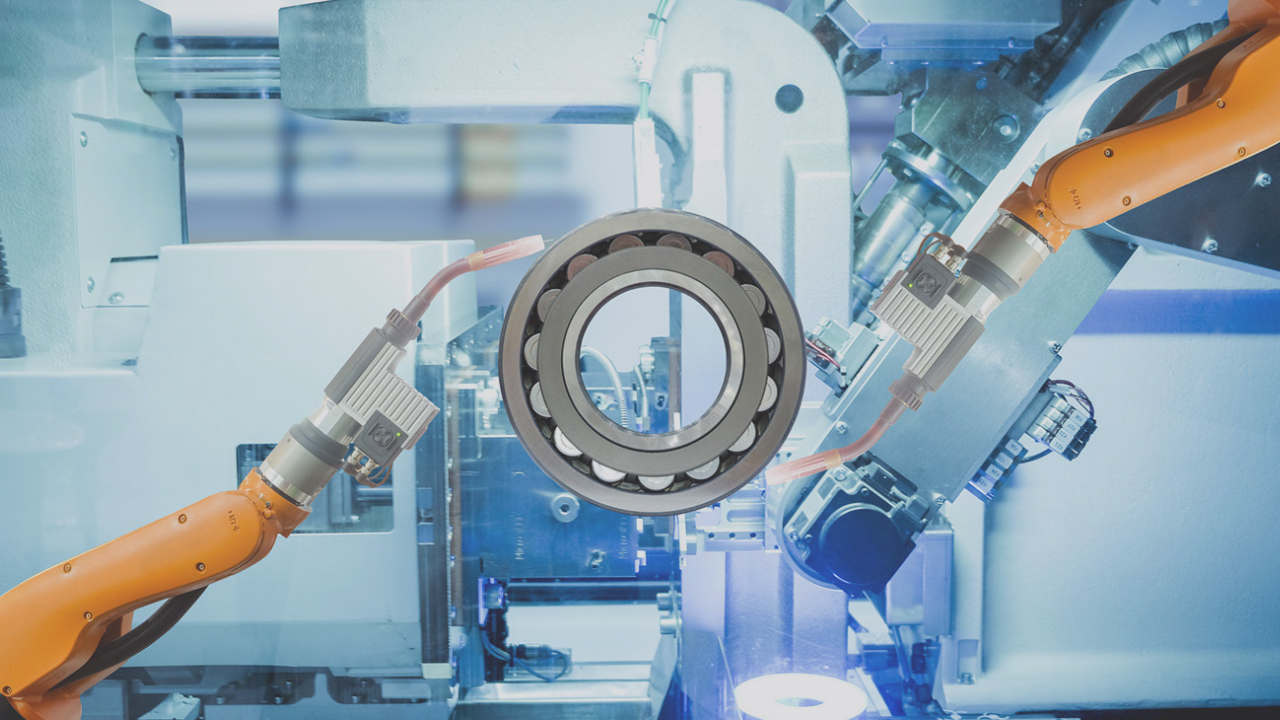
Smart Manufacturing Solutions Abound
So what exactly are these advanced automation technologies we’re talking about when we discuss smart manufacturing? The report summarizes a set of ten smart manufacturing solutions manufacturers are adopting:
- Smart Devices
“Smart devices are self and system-aware assets that acquire and process operating data – and monitor and report on asset conditions such as self-diagnostics and energy usage.”
- Manufacturing Execution Systems (MES)
“Manufacturing Execution Systems (MES) track and document the transformation of raw materials into finished goods, providing real-time production management to drive enterprise-wide compliance, quality, and efficiency.”
- Quality Management Systems (QMS)
“Quality Management Systems (QMS) standardize and automate quality documentation, processes, and measurements.”
- Computerized Maintenance Management Systems (CMMS)
“Computerized Maintenance Management Systems (CMMS) help organizations track and manage maintenance and repair activities for their facilities, equipment, and other assets in one place.”
- Asset Performance Management (APM)
“Asset Performance Management (APM) combines process, operational, and machine-level data through dashboards to monitor machine and plant health, ensuring optimal uptime, throughput, and maintenance needs.”
- Production Monitoring
“Production Monitoring provides seamless connectivity to machines on the plant floor, delivering transparent, real-time operational KPIs like OEE and dashboards to drive continuous improvements.”
- Distributed Control Systems (DCS)
“Distributed Control Systems (DCS) use decentralized elements to control dispersed systems, such as automated industrial processes or large-scale infrastructure systems.”
- Supply Chain Planning (SCP)
“Supply Chain Planning (SCP) combines data from multiple departments across the business or from outside market resources to sync demand and supply forecasting to improve inventory accuracy and production management.”
- Enterprise Resource Planning (ERP)
“Enterprise Resource Planning (ERP) automates front- and back-office processes, including financial management, revenue management, human capital, order management, billing, and inventory.”
- Analytics
“Analytics use data to solve manufacturing bottlenecks, optimize output and quality, and provide new insights.”
Contact SACA to Learn More about Smart Automation Certifications
As manufacturers incorporate these new advanced automation technologies, they’re finding they need workers with more advanced technical and technological skills than ever before. Unfortunately, there aren’t enough workers with these skills to fill the many roles available today, creating what is known throughout industry as the “skills gap.”
How can manufacturers find the highly-skilled workers they need so desperately? One promising solution is the development of industry-standard certifications that focus on connected-systems skills. The Smart Automation Certification Alliance (SACA) sits at the forefront of the effort to certify students and workers who demonstrate the required knowledge and hands-on smart automation skills employers so desperately need.
To learn more about Industry 4.0 certifications and how SACA can help both educational institutions and industry employers begin the task of bridging the Industry 4.0 skills gap, contact SACA for more information.
About Duane Bolin
Duane Bolin is a former curriculum developer and education specialist. He is currently a Marketing Content Developer for Amatrol, Inc. Learn more about Amatrol and its technical training solutions, including eLearning, here and connect with Duane on Amatrol’s Twitter, Facebook, LinkedIn, and YouTube pages.
- Published in News, Technology




